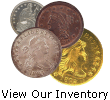The following was written by Brian.
We folks in the hobby know that the precious metal content of our circulation strike coins contain less and less precious metal (particularly silver and copper) as the dates of those coins get more modern. It’s just a cold fact that over time, the intrinsic value of our coins has decreased.
Roosevelt and Mercury Dimes, Washington Quarters, and Walking Liberty, Franklin and Kennedy Half-Dollars minted in 1964 and earlier are 90% silver (just finding a 90% silver coin anywhere outside a coin shop these days is finding a needle in a haystack).
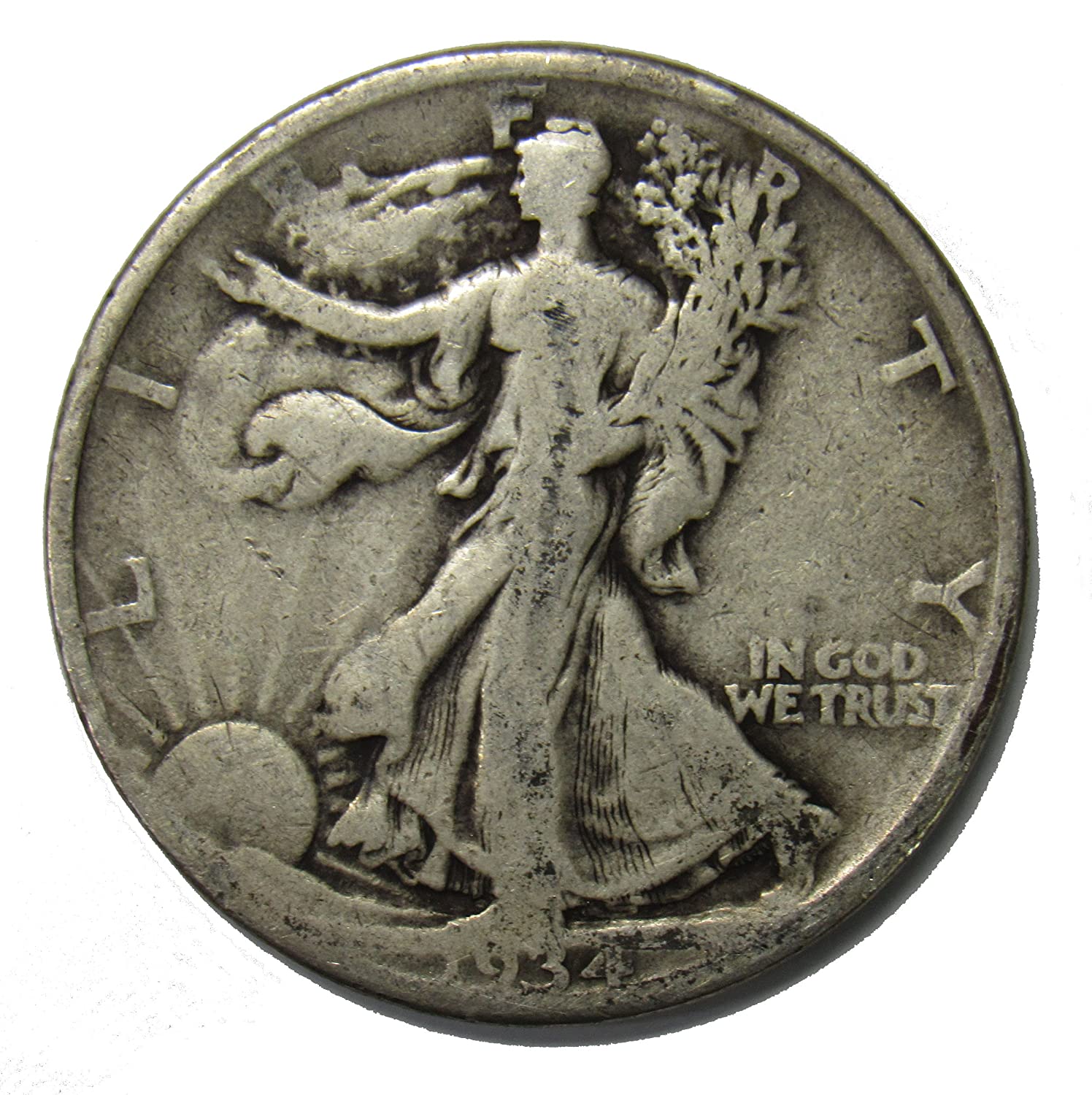
Between the years 1965 and 1976, two major U.S. coins contained 40% silver. The term “40% silver” is a way for investors, collectors, and buyers to refer to Kennedy Half-Dollars minted 1965–1970, and 1976, and Eisenhower Silver Dollars minted 1971-1974, and 1976.

All regular coins dated 1965 or later are clad coins and contain no silver at all. That 1983 Washington quarter in your pocket (unless it is an extremely rare mint error, which I assure you, it isn’t) has no intrinsic value. It is in effect, a physical bitcoin. And pretty much nobody cares.
For US cents, the alloy remained 95 percent copper and 5 percent zinc until 1982, when the composition was changed to 97.5 percent zinc and 2.5 percent copper (copper-plated zinc). I’m pretty sure not many outside the hobby even noticed.
So…where’s the outrage?
Well, nobody has seemed to bat an eye at these changes when they happened and this is due in part to the ancient Roman theory that if it looks the same, it must be the same in value. No need to alarm the citizens, right?
The Romans employed a technique of ‘silvering’ coins; essentially brushing on a light coat of heated silver onto a non-silver coin – all in an effort not to stir the commoners. And it worked. Silvered coins were indeed just made to look silver. As previously mentioned, they did contain some silver but in small enough proportions that it was not obvious so the 1% to 5% silver containing coins were plated to look like their ancestors that bore a pure silver content.

People of the day expected a coin to contain the required amount of the precious metal but inflation made a solid silver coin too high in value to be a useful denomination.
Today we see the same thing, but like I said all along, nobody really cares.
As a follow-up from our January 26th blog post, the fresh roll of 1909 VDB Lincolns are back from grading and now listed on our website. Check out the "reveal video" below.
so cool!that the pennies from that roll would all come back in such high states of preservation after over a century in the original ,so spot free with so many reds fantastic.Hope you guys continue with these fascinating blogs.
Click the player below to listen to our 30-second radio spot on WBZ News. If you catch it on the air, let us know!
Nice information .. Its too bad it wasn't a little longer with an intro video.
Excellent spot. Well done.
Excellent commercial. Clear, concise, informative and well communicated.
Tom...gotta luv it!
Concise, sincere and totally on point ...and yes:, your "MS-71" Team always offers 'Expert Service'...
The following was written by Brian.
The die-sinker. Just what in the world is a die-sinker? Sounds German. Or perhaps it is a fishing lure of some kind? Hit man? Torture device? Well, it’s none of the aforementioned. A die-sinker is a person who engraves dies used to punch or stamp designs onto coins or medals.
Surely, if you enjoy numismatics, you have stumbled upon a token or two in your day. Thanks to the die-sinkers, there are thousands of interesting and historic tokens and medals available for collection and enjoyment.
One of the most prominent die-sinkers of the 19th century was a Cincinnati businessman named James Murdock Jr. As a young man, Murdock emigrated from Ireland to the United States, working under the tutelage of another prominent Cincinnati die-sinker named John Stanton. Murdock would eventually purchase and run Stanton’s business as well as others.

Here’s an example of one of Murdock’s Civil War Tokens.
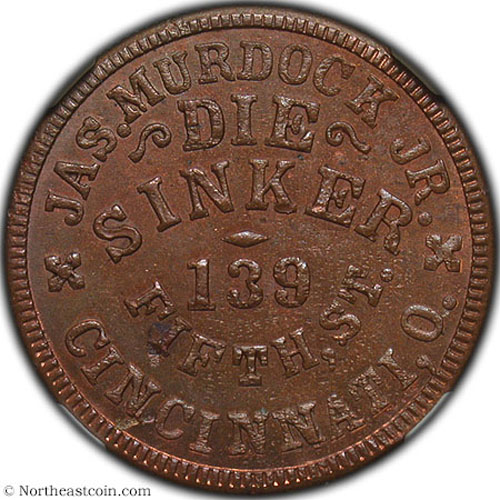
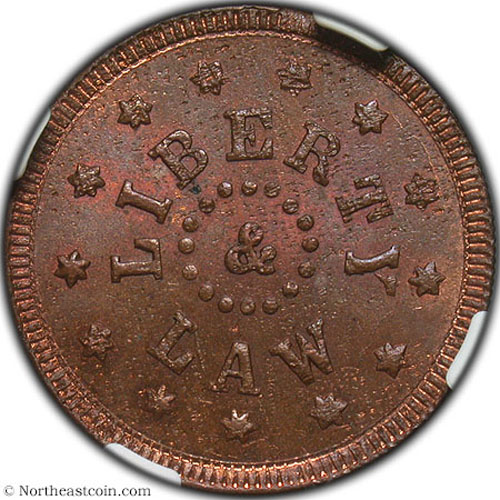

Here is another image of some of Murdock’s Civil War ‘storecards’ (used mostly by tradespersons and valued generally at 1 cent). The top center is Murdock’s advertising obverse and pictured around them are 5 stock dies.

It is known that during the Civil War and post war, collectors of these tokens could purchase them directly from the die sinker companies. This is where it gets interesting as many collectors would convince the die-sinkers to create custom tokens using dies not intended for each other (a practice known as ‘muling’). In addition to different dies, sinkers would often be persuaded to use different metals such as silver, aluminum and copper. This, in effect, resulted in some real rarities.
In addition to tokens, Murdock is credited with creating the first ‘bag-tag’ (a metal luggage tag used on the railroads). In fact, Murdock did so much more. His advertisement in the September 23, 1922, issue of The Cincinnati Enquirer listed the company’s products as “Steel Stamps, Stencils, Metal Specialties, Name and Number Plates, Metal Checks, Burning Brands, Log-Branding Hammers, Embossing Dies.” A regular Murdock for hire, this guy excelled at most everything that presented an opportunity across many industries – including seals. This neat image below is from the ANA magazine.

The following was written by Brian.
This is a silver certificate.

Many beginning hobbyists, or perhaps the casual observer, might argue that it is not a silver certificate but rather a Gold Seal payable in gold, but that’s not the case. Rather, this is an Emergency Issue Silver Certificate with a gold seal.
During World War II, the United States issued special currency for troops in North Africa and parts of Europe as well as the troops in Hawaii. The Hawaii notes have a brown seal and are overprinted with the word “HAWAII” on the front and back of the note. These were created after the attack on Pearl Harbor. The denominations for the Hawaii emergency notes were $1, $5, $10, and $20, while the North Korea emergency notes were $1, $5 and $10.
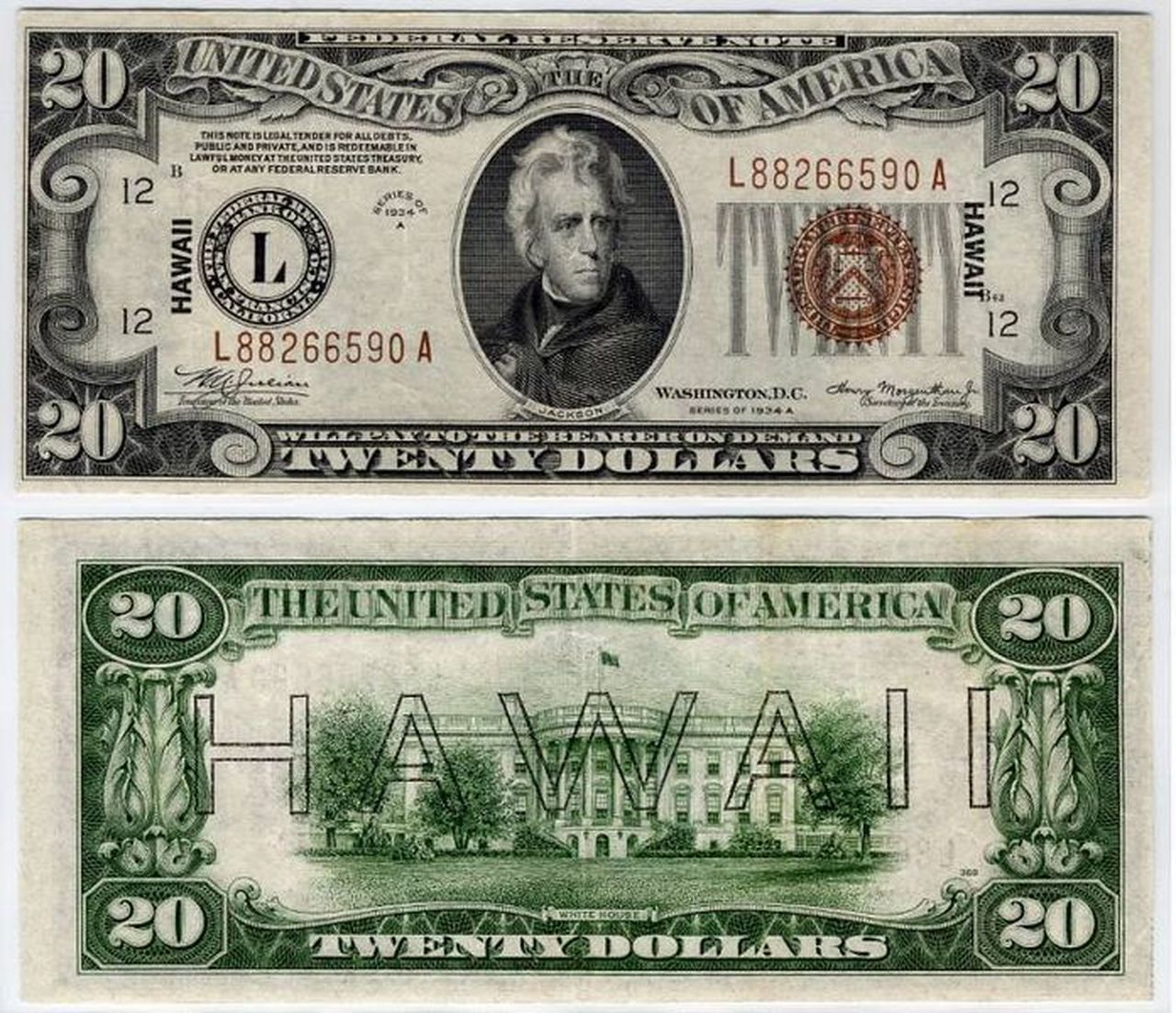
The idea behind the overprints was to easily distinguish US currency captured by Japanese or North Korean forces and render them useless. The US military feared that a Hawaiian invasion could result in the seizing of considerable amounts of US currency from financial institutions, businesses and/or private individuals. So, on January 10, 1942 an order was issued to recall all regular US currency in the islands, save for set caps that individuals and business could carry.
On June 25, 1942, new overprinted notes were first issued. Again, the hope was that should there have been a Japanese invasion, the US government could immediately declare any Hawaii-stamped notes worthless, due to their easy identification. This would make non-overprinted notes redundant and the residents of Hawaii would be forced to turn in any such notes for the overprinted ones.
After the war (and faced with a $200 million stockpile in currency) government officials decided that rather than dealing with the logistical problems of shipping the recalled currency back to the mainland, they would simply destroy them. They made use of a local crematorium until deciding that the job was too big and going too slowly when they employed the help of the Aiea Sugar Mill to finish the job.




